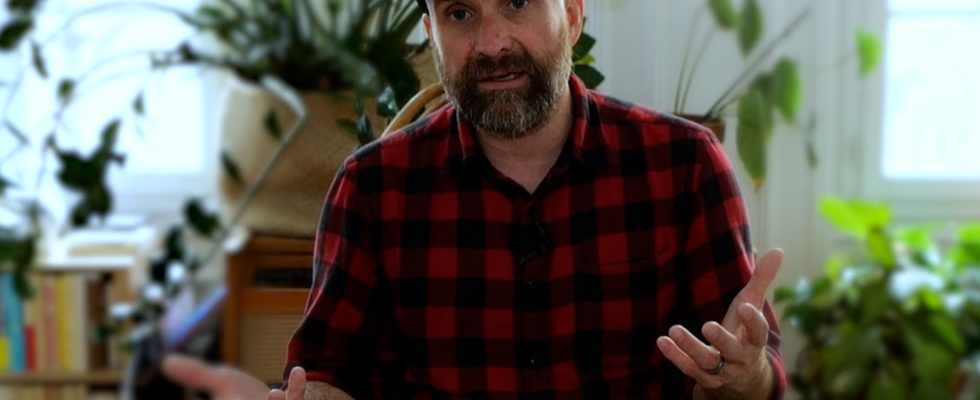It was in 1992. As cod stocks, a highly prized fish for industrial fishing in Canada, collapsed, Brian Smith, a fisherman before the eternal for more than twenty years, wonders. Is this profession that he undoubtedly loves more than reason doomed to disappear? “At that time, I asked myself if I was not going to have to end my life on earth, in sadness and despair,” he remembers.
Born on the island of Newfoundland, Canada, about 50 years ago, Bren Smith grew up in a small fishing village where they were considered heroes. In his book The ocean farmer (Ed. The Walking Tree), he tells how he went from industrial fisherman in Alaska, to ocean farmer in New Jersey, to cultivate shellfish and algae in an ecological and resistant underwater farm. to the effects of climate change.
What made you decide to stop industrial fishing to develop another, more ecological way of doing your job?
First, there was the collapse of cod stocks in the 1990s. More than 30,000 people lost their jobs in the region of Newfoundland where I come from. I understood that our practices were killing the ocean. And what’s the point of fishing in a dead ocean? And then in the early 2000s, when I had been growing oysters for seven years, my farm was hit two years in a row by hurricanes Sandy and Irene. There, I had something that clicked. I understood that the climate change we were talking about, and which was only supposed to happen in a hundred years, was in fact already here and there. So I started thinking about developinga 3D ocean farm simple and ecological.
How did you come up with the idea for this vertical farm made up of algae and shellfish, which you designed and developed in recent years?
In reality, I didn’t invent anything. Humans have been farming the ocean for thousands of years. Indigenous communities and the Irish, for example, have long cultivated seafood and seaweed. The only thing I did was to bring all this know-how together in the same place to do polyculture. All this within a simple structure, easy to build and inexpensive (between 20,000 and 25,000 euros investment) so that anyone can reproduce this type of farm.
What is the magic recipe?
All you need is anchors and ropes to hold each crop line and their scaffolding in place, all attached to the surface by buoys. Of course, it is only possible to grow seafood and seaweed. Nothing that moves, like fish for example. Once the structure is in place, the ocean will then decide for you. There must be sufficient nutrients in the location where you have chosen to set up your farm. Then all you have to do is wait. No need for fertilizer. Shells and algae are really easy items to grow. And what’s more, they nourish the ocean, capture CO2, help reefs regenerate. It’s fantastic !
Don’t you miss your life before?
I’m not going to lie: of course I miss it. Deep sea fishing, hunting fish, it was all very exciting. But as an ocean farmer, I have managed to maintain this connection with the sea. The advantage also is that today I am my own boss! And then I sail all day, and I continue to do what pushed me to become a fisherman in the first place: feeding people. I certainly had to give up certain parts of the profession, but I kept the most important elements of the fishing culture that I love so much.
And then today, thanks to the training program called Greenwave that I designed, there are around 8,000 people per year who develop these types of ecological farms in the ocean. It’s a real source of pride!
Fishing, prison, drugs, redemption… Bren Smith told his story in front of the camera 20 minutes. To discover it, go to the video at the top of this article (if you have made it this far, refresh the page).

